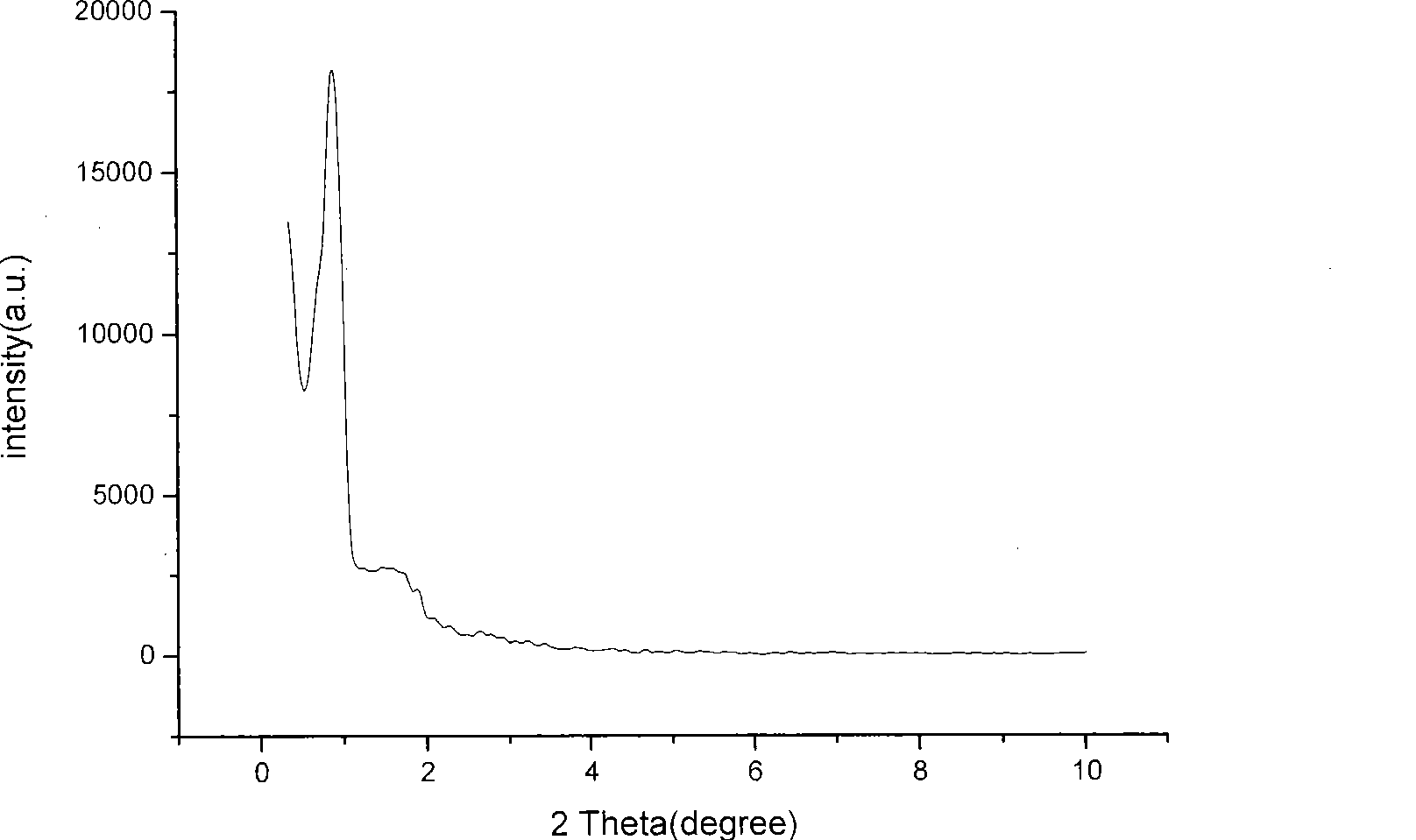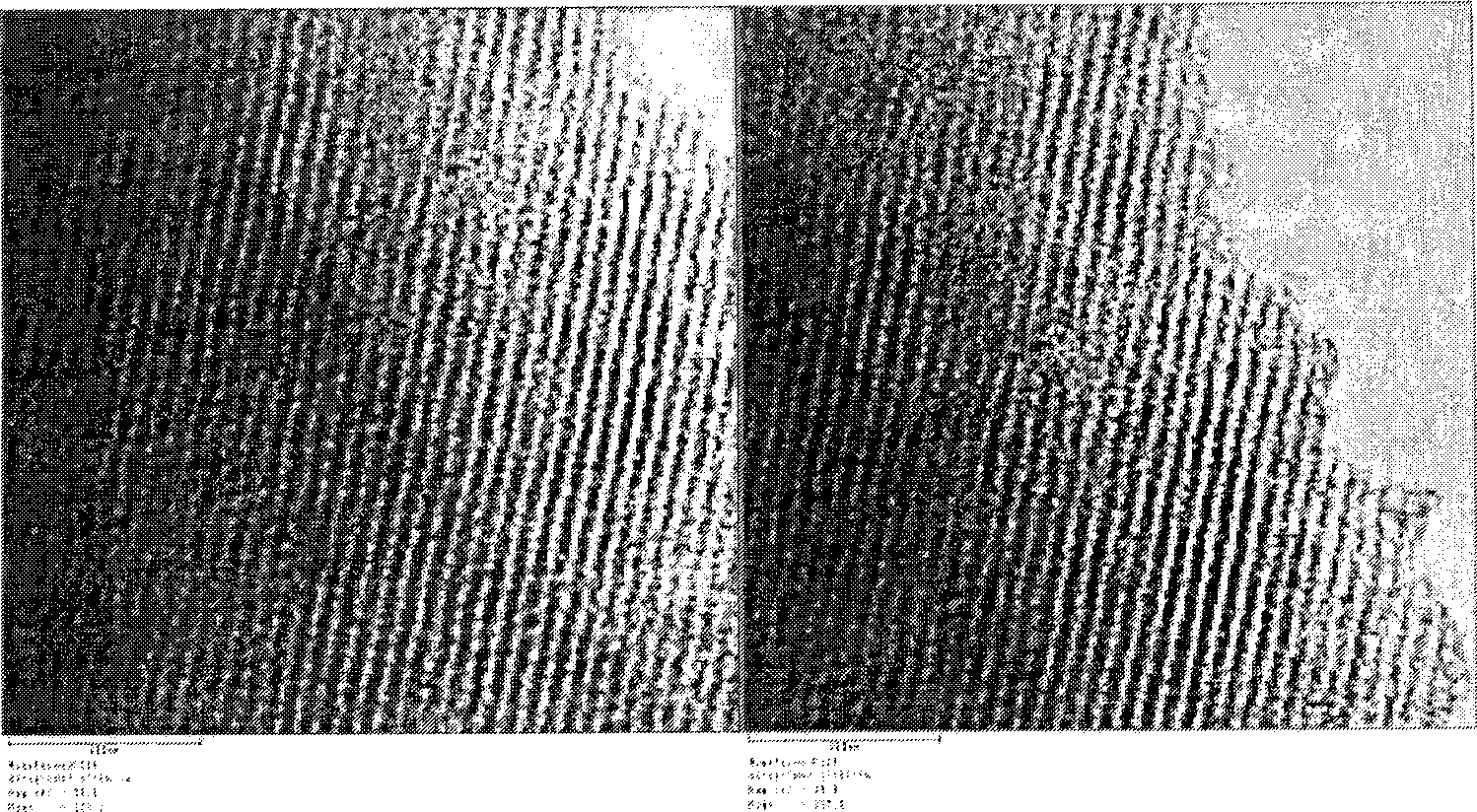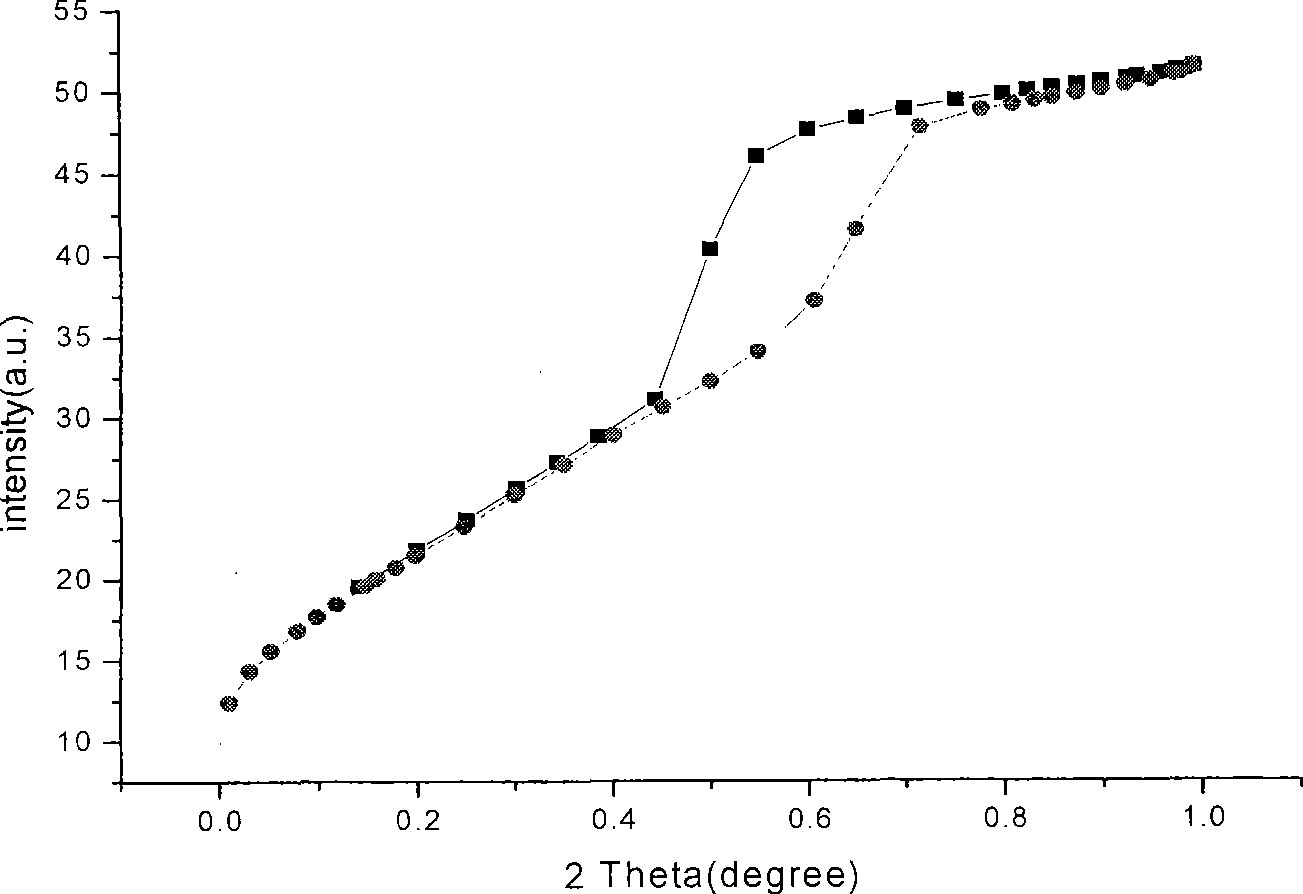Microwave assisted method for rapidly synthesizing ordered mesoporous carbon
A microwave-assisted, mesoporous carbon technology, which is applied in the field of carbon nanomaterial preparation technology, can solve the problems of consuming a lot of time and energy, and not forming a system.
- Summary
- Abstract
- Description
- Claims
- Application Information
AI Technical Summary
Problems solved by technology
Method used
Image
Examples
specific Embodiment 2
[0015] In the early stage of the experiment, phenol and formaldehyde were used to polymerize under alkaline conditions to obtain a low molecular weight (less than 500) resol resin precursor, which was formulated into a phenolic resin ethanol solution with a mass fraction of 20% for later use. Dissolve 1.0 g of template agent F127 in 10.0 g of absolute ethanol, add 1.0 g of 0.2 mol / L HCl solution dropwise, and stir at 40°C for 1 h to form a transparent solution. Slowly add 2.08g tetraethyl orthosilicate and 2.5g ethanol solution (20%) of phenolic resin dropwise, stir for 2h to make it evenly mixed. The mixture was transferred to a flat-bottomed Petri dish, and the solvent was evaporated at room temperature (25° C.) for 5-8 h to form a uniform film. Transfer to a microwave oven for microwave polymerization with a microwave power of 200W for 30 minutes. Carbonization was carried out in an atmosphere tube furnace with nitrogen gas flow. Incubate at 350°C for 5 hours, 500°C and 6...
specific Embodiment 3
[0017] In the early stage of the experiment, phenol and formaldehyde were used to polymerize under alkaline conditions to obtain a low molecular weight (less than 500) resol resin precursor, which was formulated into a phenolic resin ethanol solution with a mass fraction of 20% for later use. Dissolve 1.0 g of template agent F127 in 10.0 g of absolute ethanol, add 1.0 g of 0.2 mol / L HCl solution dropwise, and stir at 40°C for 1 h to form a transparent solution. Slowly add 2.08g tetraethyl orthosilicate and 2.5g ethanol solution (20%) of phenolic resin dropwise, stir for 2h to make it evenly mixed. The mixture was transferred to a flat-bottomed Petri dish, and the solvent was evaporated at room temperature (25° C.) for 5-8 h to form a uniform film. Transfer to a microwave oven for microwave polymerization with a microwave power of 600W for 60 minutes. Carbonization was carried out in an atmosphere tube furnace with nitrogen gas flow. Incubate at 350°C for 5 hours, at 500°C an...
specific Embodiment 4
[0019]Specific embodiment four (comparative examples):
[0020] (1) In the early stage of the experiment, phenol and formaldehyde were used to polymerize under alkaline conditions to obtain a low molecular weight (less than 500) resole resin precursor, and a phenolic resin ethanol solution with a mass fraction of 20% was prepared for future use. Dissolve 1.0 g of template agent F127 in 10.0 g of absolute ethanol, add 1.0 g of 0.2 mol / L HCl solution dropwise, and stir at 40°C for 1 h to form a transparent solution. Slowly add 2.08g tetraethyl orthosilicate and 2.5g ethanol solution (20%) of phenolic resin dropwise, stir for 2h to make it evenly mixed. The mixture was transferred to a flat-bottomed Petri dish, and the solvent was evaporated at room temperature (25° C.) for 5-8 h to form a uniform film. Put it into a vacuum oven for thermal polymerization at 100°C for 24 hours, and carbonize it in an atmosphere tube furnace with nitrogen flow. Insulate at 350°C for 5 hours, at ...
PUM
| Property | Measurement | Unit |
|---|---|---|
| pore size | aaaaa | aaaaa |
| pore size | aaaaa | aaaaa |
| specific surface area | aaaaa | aaaaa |
Abstract
Description
Claims
Application Information
 Login to View More
Login to View More - R&D
- Intellectual Property
- Life Sciences
- Materials
- Tech Scout
- Unparalleled Data Quality
- Higher Quality Content
- 60% Fewer Hallucinations
Browse by: Latest US Patents, China's latest patents, Technical Efficacy Thesaurus, Application Domain, Technology Topic, Popular Technical Reports.
© 2025 PatSnap. All rights reserved.Legal|Privacy policy|Modern Slavery Act Transparency Statement|Sitemap|About US| Contact US: help@patsnap.com



